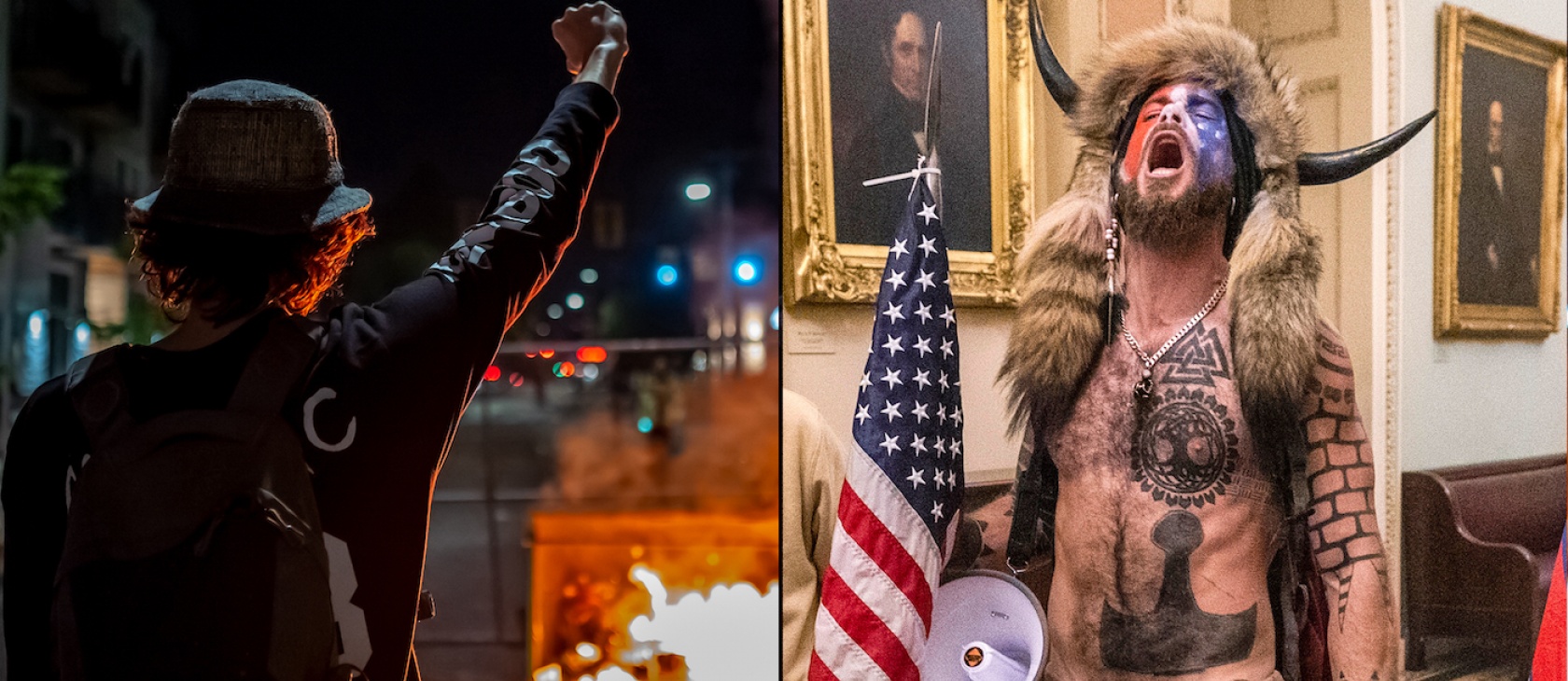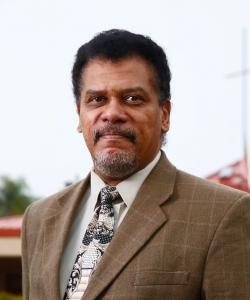In the past year, many American cities experienced violent outbursts during and after protests led by groups such as Black Lives Matter (BLM) and Antifa’s united front. Their attacks still continue in some areas. On January 6, we also witnessed violence at the U.S. Capitol during protests led by supporters of President Donald Trump over the legitimacy of the 2020 election.
Comparing these two deadly outbreaks has become controversial. Some point out disparate responses to the outbreaks, with political and media figures being accused of treating the Capitol mayhem with a contempt absent from their treatment of BLM looting. What should we make of this?
There is certainly merit to the accusation of hypocrisy against those who respond to violence based on the political or ideological alignment of its perpetrators. This accusation, however, works both ways, as employing an ideologically motivated smokescreen to minimize the disorder coming from friendly quarters is common to the Left and the Right alike. Claims of disenfranchisement and victimization by insidious forces have radicalized elements across the political spectrum.
However, the justifications for opposing our governmental system are treated differently by people on either side of this controversy. The main difference is that only on the Left do we see an organized ideological movement that justifies antagonism against the present order of things – an attitude also seemingly embraced by corporate America, the educational establishment, the media, and various politicians. The second major difference is that the violence associated with racial protests has been consistently repeated and yet gained mainstream indifference or, at times, outright support. Organized right-wing extremism, on the other hand, is a fringe phenomenon that is almost universally shunned.
Take, for example, self-described agitator Vicky Osterweil, who released In Defense of Looting. The book defends looting as an ideological statement against an allegedly immoral and racist capitalist system and its unequal distribution of wealth. Osterweil’s defense of looting is based on a Marxist economic analysis that renders the entire economic system illegitimate. Looting “attacks the idea of property, and it attacks the idea that in order for someone to have a roof over their head or have a meal ticket, they have to work for a boss, in order to buy things that people just like them somewhere else in the world had to make under the same conditions,” Osterweil told NPR. “It points to the way in which that's unjust.” Robbery, the book claims, harms only the oppressive system of free enterprise and the oppressive concept of “law and order” that perpetuates the status quo.
Notice how the author leverages a generalized assumption of oppression to glorify BLM’s offenses against the present constitutional order. In the case of the Capitol rioters, however, the offenders are not celebrated but castigated for rebelling against the same constitutional order. It seems as if the political and ideological aims are what is important, and “the system” is instrumentalized on account of that aim.
Osterweil’s book is not an isolated example. The idea that America is systemically racist, and the constitutional order is oppressive and invalid, is the very foundation of Critical Race Theory. The Pulitzer Prize-winning 1619 Project asserts that “the very basis of property in the U.S. is derived through whiteness and through [b]lack oppression, through the history of slavery and settler domination of the country.” The 1619 Project’s narrative calls for the dismissal of the American constitutional system – not merely its reform but a radical rejection of the entire political, social, and economic structure of American life.
This narrative isn’t drawn from the perspective of black Americans as they collectively reflected on the American experience; this view is derived from applying the radical, socialist analysis of America to black citizens. The black experience is filtered through the radical beliefs that American ideals were a lie from the beginning and that the institutional framework upon which America was built is illegitimate, intrinsically racist, and irreformable; thus, it must be rejected. These ideas are not a mere emotional reaction to recent electoral events but a systematic analysis pervasive among the elite which has filtered down to the masses, thereby forming what political philosopher Hannah Arendt’s The Origins of Totalitarianism calls a “terrifying negative solidarity.” Solidarity forms around a narrative of victimization, which feeds on an authentic historical experience that is totalized. This totalization creates a closed system of thought, which indicts the body politic as a whole in the name of group cohesion. Love for the group demands the acceptance of the narrative and condemns the constitutional framework that sustains an entire society invested in racism. (For an examination of the totalitarian impulse in general, see Rod Dreher’s Live Not By Lies: A Manual for Christian Dissidents.)
Worse yet, this view’s proponents have fashioned a public school curriculum around the 1619 Project, and any criticism of the project is countered by accusations of racial animosity. The filtering of the general question of race through a radical explanatory system is conflated with a concern for racial justice, which justifies a rejection of the constitutional order. This analysis seems to condone the mob’s imposition of its views of justice “by any means necessary” – but only with regard to the question of race. This is how an attack on the constitutional order can be seen as so detrimental when it comes from one quarter but so justified when it comes from another, even when the latter attempt is in fact more systematic, entrenched, and destructive.
It is as if the taxonomical category of victimized group confers a sort of epistemic privilege granting it immunity for its actions, which is not granted to those whose identity is more aligned with a purported racial transgressor. We are told we must accept this grant of immunity by creating a different set of rules for analyzing the aims and activities of these victims of history. (For a good analysis of identity politics, see Joshua Mitchell, “The Identity Politics Critique of the American Republic,” in Gerald McDermott’s Race and Covenant: Recovering the Religious Roots for American Reconciliation, pp. 79-97.)
Far from a necessary ingredient of an ideology that upholds violence, Dr. Martin Luther King Jr. soberly referred to rioting as a “temper tantrum” by people losing hope. In other words, it was not ideologically motivated. As he stated, “Violence may go to the point of murdering the hater, but it doesn’t murder hate. It may increase hate. It is always a descending spiral leading nowhere.”
The 1619 Project, on the other hand, is informed by the assumptions of Critical Race Theory. CRT is first and foremost a proposed explanation of origins that focuses on what it proclaims is the intrinsically racist nature of our society’s legal framework. It sees the problem of race as a systemic (as opposed to systematic) one and the law as its most powerful instrument. It starts with the a priori assumption that the United States is rooted in white supremacy. From there, the theory concludes that white supremacy is written into the law, even if not overtly stated. Disparate outcomes in economic, legal, and social areas of life are explained by the given of intrinsic racism. Critical Race Theory is mostly a cataloguing of examples that admits no challenging of premises. When CRT speaks of the “oppressed” or the “marginalized,” it is not referring to present states of affairs affecting given groups but to a class of people who are marginalized by definition.
With such theories spreading like wildfire in academic, cultural, political, legal, theological, and judicial circles, it is to be expected that one cannot oppose violence by the “oppressed” against the “oppressive” system without being accused of abetting the oppressors. This is why a limited, violent action by political opponents against the very system CRT considers illegitimate (like the attack on the U.S. Capitol) is utilized as a reason to delegitimize the opposition. How can the rejection of our nation’s constitutional framework receive accolades, while a similar rejection coming from the other side of the political spectrum – and one that is a completely out-of-the-mainstream minority view – be rejected with moralistic zeal?
What at face value seems contradictory makes perfect sense within the framework I have outlined. The question at hand is not whether the system is illegitimate; the question is what tactic can advance the ideological aims of those intent on destroying the system from the side of the “oppressed.”
While we should indeed avoid drawing facile distinctions in an attempt to justify acts of political violence that suit our political alignment – and them alone – fear of this kind of hypocrisy should not prevent us from making a valid examination of the ideological background that explains the inconsistency in mainstream assessments of these two expressions of violence. Otherwise, substantive analysis will give way to the weak comparisons that spring from a politicized context.
No contemporary issue demands greater clarity of thought. Alas, no issue is getting less of it.




